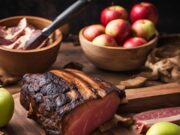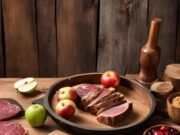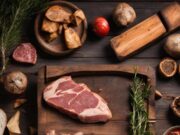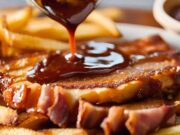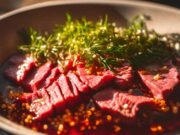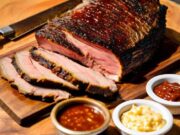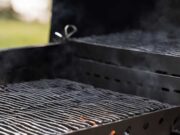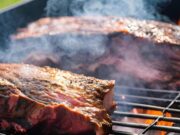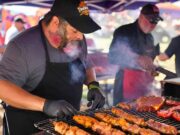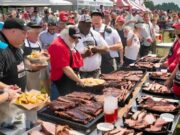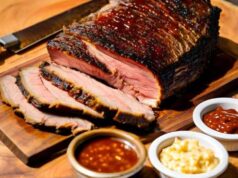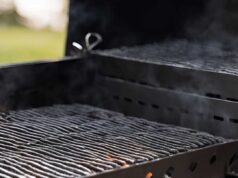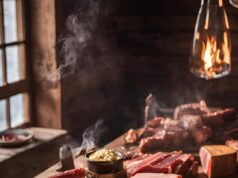When it comes to BBQ, the key to achieving mouthwatering flavor and tender texture is selecting the right cuts of meat.
With a variety of options available, understanding beef cuts and their unique qualities is essential for enhancing your grilling experience. This guide will provide you with insights into different BBQ cuts, including the best choices for various cooking styles and effective trimming techniques.
Prepare to impress your guests with expertly prepared meats.
Key Takeaways:
- Choose the right beef cut for your BBQ by considering flavor, tenderness, and thickness.
- Understanding beef quality and grading will help you make informed decisions when selecting cuts for your BBQ.
- Proper trimming, seasoning, and cooking techniques will elevate your BBQ experience and ensure the desired doneness and resting of your meat.
Understanding Beef Cuts
Understanding beef cuts is fundamental to mastering BBQ, as it enables you to select the appropriate type of meat for your grilling methods and flavor preferences. Beef is categorized into primal cuts, such as rib, loin, and chuck, which are further divided into sub-primal cuts including ribeye, T-bone, and tenderloin.
Each cut varies in quality, tenderness, and marbling, which are crucial for flavor. The USDA grades beef to ensure that you receive the best possible quality for your BBQ. Recognizing these classifications not only enhances your BBQ knowledge but also contributes to achieving a delicious outcome.
Top Cuts for BBQ
In terms of BBQ, selecting the best cuts of beef can significantly enhance your grilling experience and yield mouthwatering dishes that are sure to impress your guests.
Popular cuts such as ribeye, T-bone, and porterhouse are recognized for their rich flavor and tenderness, making them favorites among grill masters. On the other hand, flank steak provides a different texture and flavor profile, while brisket is essential for those who prefer slow-cooked BBQ techniques.
By understanding these top cuts and their unique characteristics, you can make informed choices for grilling, ensuring delicious outcomes at every cookout.
Rib Eye
The ribeye is highly regarded for its exceptional marbling, which not only enhances flavor but also contributes to juiciness and tenderness, making it an ideal choice for grilling enthusiasts. Whether you choose to cook it over high heat on the grill or opt for slow cooking, the ribeye delivers a rich, beefy flavor that can be elevated with simple seasonings or marinades, enhancing the overall barbecue experience. This cut’s versatility in cooking ensures its popularity among barbecue lovers.
The characteristic marbling throughout the ribeye is not merely for aesthetic appeal; it breaks down during cooking, resulting in a buttery texture that melts in the mouth. When selecting the best ribeye at the supermarket, look for a cut with abundant white flecks of fat interspersed among the red meat, as this can significantly enhance flavor.
In terms of cooking methods, placing the steak on a hot grill enhances its crust, while techniques like sous-vide ensure perfect doneness throughout. A blend of salt, pepper, and perhaps a touch of garlic powder is often sufficient to allow the natural flavors to shine, although marinating can introduce an exciting twist for those seeking a more adventurous flavor profile.
Brisket
Brisket is a highly regarded choice in the BBQ realm, particularly celebrated for its robust flavor and ideal tenderness when cooked using slow cooking techniques. This cut demands patience, as it thrives on low and slow cooking methods, resulting in a mouthwatering dish that practically melts in your mouth. The rich drippings that emerge from the brisket during the cooking process enhance its succulent flavor, establishing it as a staple in BBQ gatherings and competitions. With the appropriate seasoning, this cut can truly shine as the centerpiece of any BBQ feast.
To achieve the perfect brisket, enthusiasts often utilize methods such as smoking, braising, or even employing a slow cooker. Common seasonings like salt, pepper, garlic powder, and paprika serve to enhance the natural flavors, while marinades can add additional depth and tenderness. The essential factor is allowing sufficient time for the collagen in the meat to break down, transforming tough fibers into a tender, juicy slice.
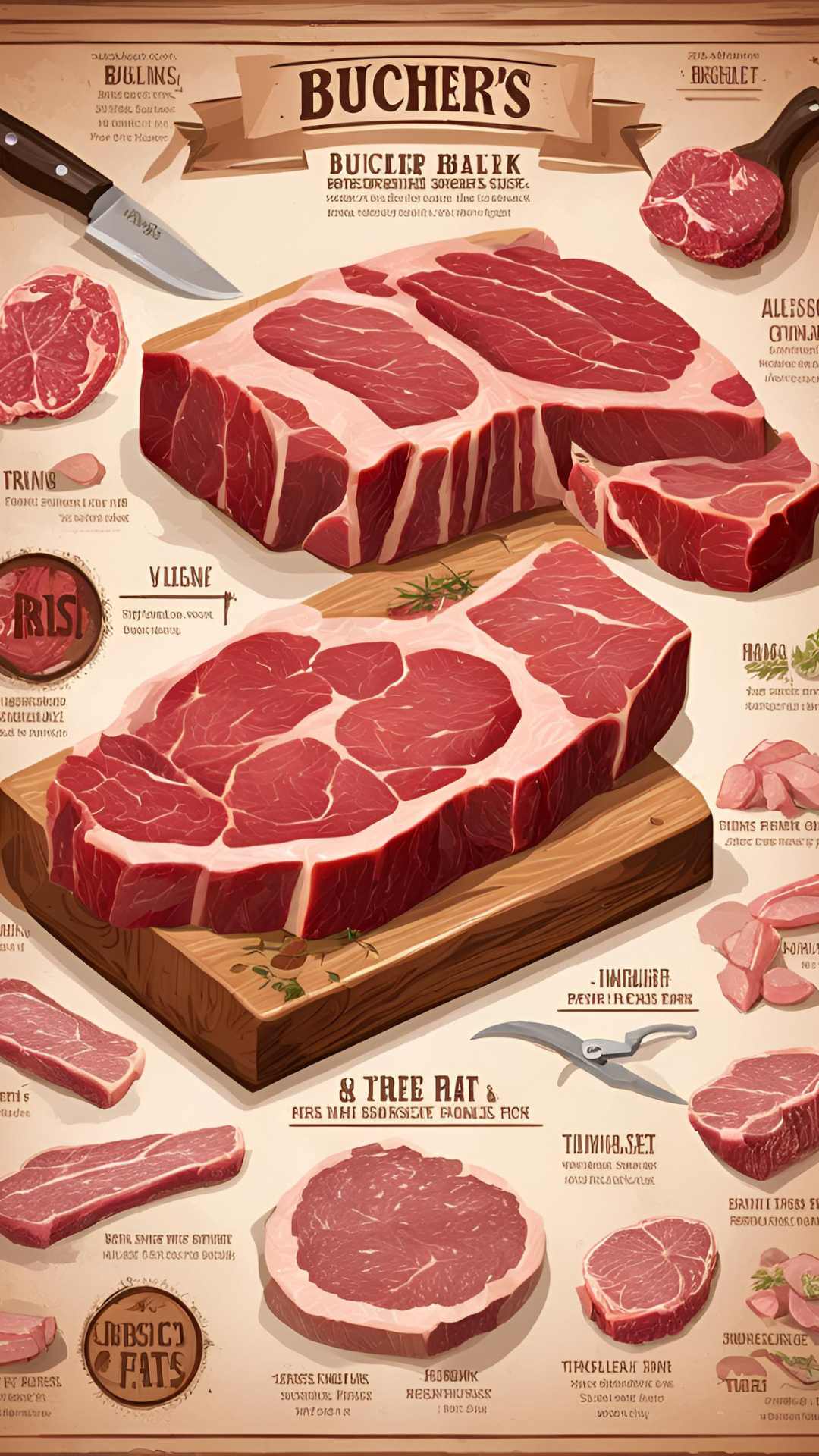
When served, pairing the brisket with homemade barbecue sauce, pickles, or a tangy coleslaw can significantly elevate the dining experience, making each bite a delightful celebration of flavor and texture.
T-Bone and Porterhouse
Both the T-bone and porterhouse steaks are premium cuts that are highly regarded for their exceptional flavor and tenderness, making them favorites among grilling enthusiasts. The T-bone features a smaller portion of tenderloin, whereas the porterhouse boasts a larger tenderloin section, providing a delightful eating experience for those who appreciate both texture and flavor.
When grilled to perfection, these cuts yield a smoky, juicy steak that can be enjoyed on its own or paired with delicious sides, enhancing any BBQ gathering. Understanding the differences between these two cuts will enable you to make an informed choice for your next cookout. Learn how to choose and trim the best cuts for BBQ
When selecting high-quality cuts at the supermarket, look for well-marbled steaks; the intramuscular fat plays a significant role in flavor and tenderness. A rich red color indicates freshness, while you should avoid any cuts that display excessive browning or a slimy texture.
Regarding cooking methods, grilling or broiling at high heat enhances the natural flavors of these steaks, resulting in a beautifully seared crust. For seasoning, a simple mix of kosher salt and freshly cracked pepper works wonders, allowing the meat’s inherent flavor to shine. If you wish to experiment, consider using a marinade or dry rub to enhance the taste while complementing the steak’s rich profile.
Flank Steak
Flank steak is a flavorful cut of beef renowned for its unique texture and ability to absorb marinades, making it a popular choice for grilled dishes. While it is leaner than some other cuts, flank steak can become incredibly tender when marinated properly and cooked over high heat, resulting in a rich and beefy flavor profile. This cut is ideal for dishes that require thin slicing, allowing it to excel in tacos, salads, or served alongside grilled vegetables, making it an exciting addition to any BBQ menu.
To enhance the natural flavors, consider marinating the steak for at least a few hours with a mixture of acid, oil, and spices, such as lime juice, olive oil, garlic, and cumin. Cooking it quickly over direct heat creates a perfect sear while maintaining juiciness. Once grilled, slicing against the grain is crucial for ensuring tenderness.
For serving, pairing flank steak with chimichurri sauce provides a zesty kick, or topping it with avocado offers a creamy contrast. Integrating it into a hearty grain bowl or serving it with roasted potatoes elevates any meal, making it a versatile option for weeknight dinners or special occasions.
Chuck Eye Steak
Chuck eye steak is often regarded as a budget-friendly option that provides remarkable flavor and tenderness, rivaling some of the more expensive cuts. This cut comes from the shoulder area of the beef, offering a rich, beefy flavor that holds up well during grilling. When prepared correctly, the chuck eye becomes juicy and tender, making it an excellent choice for BBQ enthusiasts who want to enjoy quality beef without overspending. With the right seasoning and cooking technique, this cut can easily become a highlight of your grilling experience.
To achieve the best results, look for well-marbled pieces, as the fat content enhances both flavor and moisture during cooking. When selecting a chuck eye steak, choose cuts that exhibit a vibrant red color with minimal discoloration.
For seasoning, a simple blend of salt, pepper, and garlic powder can be very effective, but marinating it in a mixture of soy sauce, Worcestershire sauce, and herbs can add additional depth of flavor. Cooking techniques such as grilling over high heat or pan-searing followed by finishing in the oven are ideal.
Remember to let the steak rest after cooking to maximize juiciness, ensuring each bite is as flavorful as possible.
Top Sirloin
Top sirloin is a versatile cut of beef that offers an excellent balance of flavor and tenderness, making it a preferred choice for grilling at barbeques. This cut has a moderate amount of fat, contributing to its juicy texture while remaining lean enough for those who favor healthier options.
When cooked to the appropriate temperature, top sirloin can be exceptionally tender and flavorful, making it suitable for steaks, kebabs, or even sliced into salads. With the right marinade or seasoning, top sirloin can easily become a staple for barbeque enthusiasts.
Its rich, beefy flavor pairs wonderfully with a variety of seasonings, allowing for extensive culinary creativity. To enhance your top sirloin experience, consider marinating it for as little as 30 minutes or up to 24 hours to significantly deepen the flavor profile. A simple marinade made with olive oil, garlic, and herbs such as rosemary or thyme complements the natural taste of the beef beautifully.
When grilling, it is essential to monitor the internal temperature, ideally cooking to medium-rare for optimal tenderness. Allowing the meat to rest after cooking ensures juices are retained, making each bite deliciously satisfying.
Choosing the Right Cut for Your BBQ Needs
Selecting the appropriate cut for your BBQ needs requires careful consideration of several key factors, including flavor, tenderness, and thickness, all of which can significantly impact the cooking process and the final outcome of your dish.
For example, cuts with higher marbling, such as ribeye or chuck eye steak, deliver enhanced flavor and juiciness, whereas leaner cuts like flank steak may necessitate specific cooking techniques to improve their tenderness.
By understanding how various cooking methods, whether grilling or smoking, affect different cuts, you will be better equipped to create an exceptional BBQ experience tailored to your preferences.
Preparing Your Cuts for BBQ
Preparing your cuts for BBQ is a crucial step that significantly impacts the overall taste and tenderness of your meat. Proper trimming to remove excess fat and silverskin not only improves the presentation but also ensures an even cooking process.
Seasoning plays a vital role as well, allowing the natural flavors of the beef to come forward. Techniques such as marinating or brining can further enhance both tenderness and flavor.
By dedicating time to preparation, you can create the foundation for an exceptional BBQ experience.
Cooking Methods for BBQ
The choice of cooking methods for BBQ can significantly influence the flavor, tenderness, and overall enjoyment of your beef cuts.
Grilling is often regarded as the most popular method, utilizing high heat to develop a smoky exterior while preserving the juiciness within.
On the other hand, smoking provides a deep, rich flavor profile that particularly enhances certain cuts, especially those that benefit from extended cooking times.
By understanding the nuances between direct and indirect heat, you can determine the best approach for each cut, ensuring perfectly cooked steaks every time.
Mastering Doneness and Resting
Mastering doneness and resting is essential for achieving the perfect BBQ steak, as these factors directly influence the texture and flavor of the meat.
Understanding how to identify the desired doneness levels—rare, medium, or well-done—ensures that you serve your beef at its optimal temperature, and utilizing a meat thermometer will provide the necessary precision.
Furthermore, allowing the steak to rest after cooking is a critical step that helps redistribute the juices, resulting in a more tender and flavorful dining experience.
Frequently Asked Questions
In terms of BBQ, you may often find yourself with questions regarding the best cut of beef, how to identify tenderness, and the ideal cooking times for different cuts. Understanding which cuts are most suitable for grilling can significantly enhance your BBQ skills, while recognizing the characteristics that indicate tenderness will help ensure a delicious outcome every time.
Furthermore, knowing the ideal cooking times based on the cut and desired doneness is essential for achieving the perfect BBQ experience.
Additional Resources
To further enhance your BBQ skills and knowledge, exploring additional resources can provide valuable insights into various BBQ techniques, tools, and equipment essential for success. By learning about different smoking methods and discovering the best grilling accessories, you can support your culinary journey.
Utilizing expert guides and articles will help you refine your skills, ensuring that each BBQ gathering is more enjoyable and flavorful than the last.
Frequently Asked Questions
What are the best cuts of meat to choose for BBQ?
The best cuts of meat for BBQ include brisket, ribs, pork shoulder, and chicken thighs. These cuts have a good balance of fat and meat, making them perfect for slow cooking on the BBQ.
How do I choose the best quality meat for BBQ?
When choosing meat for BBQ, look for cuts that have marbling (white lines of fat) throughout the meat. This adds flavor and moisture to the meat when cooked. Also, make sure the meat is fresh and not discolored or slimy.
What is the importance of trimming meat for BBQ?
Trimming excess fat from meat is important for BBQ because it helps the meat cook evenly and prevents flare-ups on the grill. It also allows the flavors of rubs and sauces to penetrate the meat better.
How do I trim meat for BBQ?
To trim meat for BBQ, start by removing any large chunks of fat with a sharp knife. Then, trim any excess fat from the edges of the meat. Finally, score the fat on top of the meat to allow for better seasoning absorption.
Is it necessary to trim all types of meat for BBQ?
No, it is not necessary to trim all types of meat for BBQ. For example, pork ribs and beef brisket benefit from trimming, but chicken thighs and pork shoulder do not need to be trimmed as much.
What should I do with the trimmed fat from meat?
The trimmed fat can be discarded or saved for other cooking purposes, such as making beef tallow or using it to flavor vegetables. Do not leave the trimmed fat on the grill as it can cause flare-ups.



